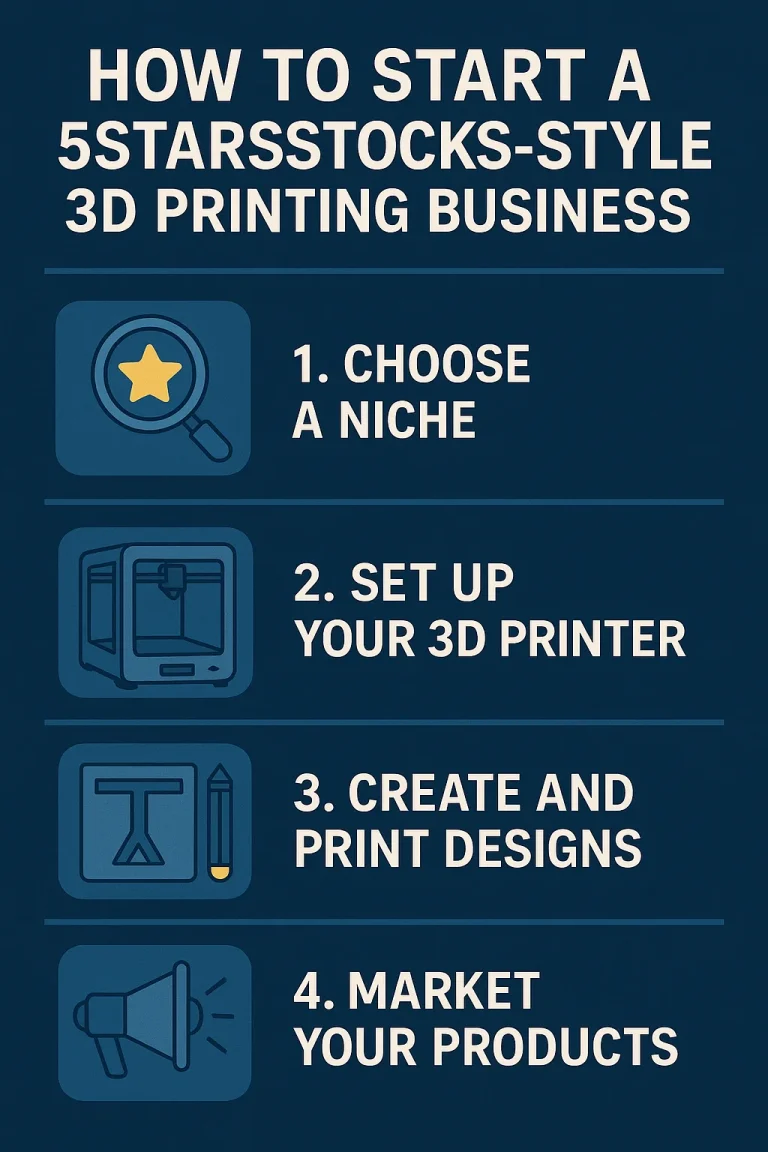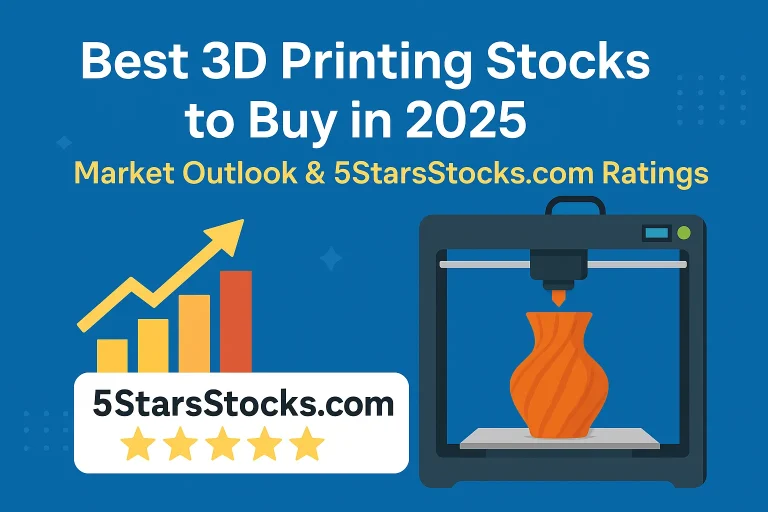How to Start a 5StarsStocks-Style 3D Printing Business
Pairing 5StarsStocks.com market insights with hands-on 3D printing can create a powerful, data-driven venture. Here’s how to get started step-by-step:
Validate Demand & Choose Your Niche
Use 5StarsStocks.com analytics to spot fast-growing 3D printing sectors like:
- Medical devices
- Auto/Aerospace parts
- Consumer-grade prototyping
- Eco-friendly printing (recycled filament)
Create a Business Plan
Your plan should include:
- Business model (service-based, digital file sales, product sales)
- Funding options (bootstrapping, investors, grants)
- Profit margin forecast
- Competitive research

Register Your Business
- Choose a name and domain
- Register your company (LLC is popular for startups)
- Apply for a tax ID (EIN)
- Research local zoning and safety rules
Buy Equipment & Tools
Printers
- Budget: Creality Ender 3 (FDM)
- Resin prints: Elegoo Mars or Anycubic Photon (SLA)
- Industrial: Prusa XL or Formlabs Fuse (SLS)
Software
- Design: Fusion 360, Blender (free), SolidWorks
- Slicing: Cura, PrusaSlicer
Setup Your Printing Lab
- Allocate space with ventilation & fire safety
- Use HEPA filters or enclosures
- Store filaments dry & clean
Start Offering Services or Products
- Print-on-demand for local businesses
- Custom parts via Shopify, Etsy, or your site
- Sell STL files on platforms like Cults3D or MyMiniFactory
Marketing & Customer Growth
- Share short videos of your print process on TikTok or Instagram
- Write blog content around “3D printing ideas” and “best printers”
- Partner with influencers in maker communities
- Use 5StarsStocks to track trends before they boom
Monitor, Improve, and Scale
- Offer same-day or rush prints for high-margin returns
- Scale to print farm once orders grow
- Optimize print time and material use
- 👉 How to Use Source Filmmaker
- 👉 SFM Animation Tips and Tricks
- 👉 Source Filmmaker vs Blender
- 👉 SFM Complete Guide
- 👉 How to Bet with Bitcoin on GoCryptoBet.com
- 👉 How to buy 3D printing stocks
FAQ: 3D Printing Business + 5StarsStocks Approach
What is a 5StarsStocks-style business?
It’s a business that uses data-driven insights from platforms like 5StarsStocks.com to predict and act on product demand trends before competitors do—giving you an edge in the 3D printing market.
What’s the best type of 3D printer to start with?
- For general use: FDM (like Creality Ender 3 or Prusa MK4)
- For high-detail: SLA (like Anycubic Photon)
- For production: SLS (like Formlabs Fuse 1)
How much capital do I need to start?
- Entry-level setup: $500–$1,000
- Mid-range: $2,000–$5,000
- Includes 1–2 printers, materials, and basic tools
Where should I sell my 3D printed items?
- Online stores: Etsy, Amazon Handmade, or Shopify
- Local: Hardware shops, schools, or co-working spaces
- Freelance platforms: Fiverr, Upwork (for CAD design & prototyping)
How can I stand out from other 3D printing businesses?
- Offer custom designs or fast delivery
- Use recycled or specialty filaments
- Publish educational content (like time-lapse prints, tips)
- Leverage 5StarsStocks trends to stay ahead of product fads
Can I run a 3D printing business from home?
Yes! Many successful businesses operate from garages or spare rooms. Just ensure:
- Fire safety protocols
- Proper ventilation (especially with resin printers)
- Noise and smell don’t disturb others
What are the legal or licensing concerns?
- Check local laws for zoning
- Some products (e.g., medical or firearm-related) may require certifications
- Trademark and copyright compliance for designs
How long does it take to become profitable?
If marketed smartly, small-scale businesses can become profitable within 3–6 months, depending on:
- Demand
- Product pricing
- Your efficiency & turnaround time
How does 5StarsStocks help my business?
- Spot new sectors gaining traction (e.g., bio-printing, industrial use)
- Avoid investing in hype segments that are cooling off
- Use stop-loss ideas to manage inventory or material risk
- Find profitable keywords for product listings



